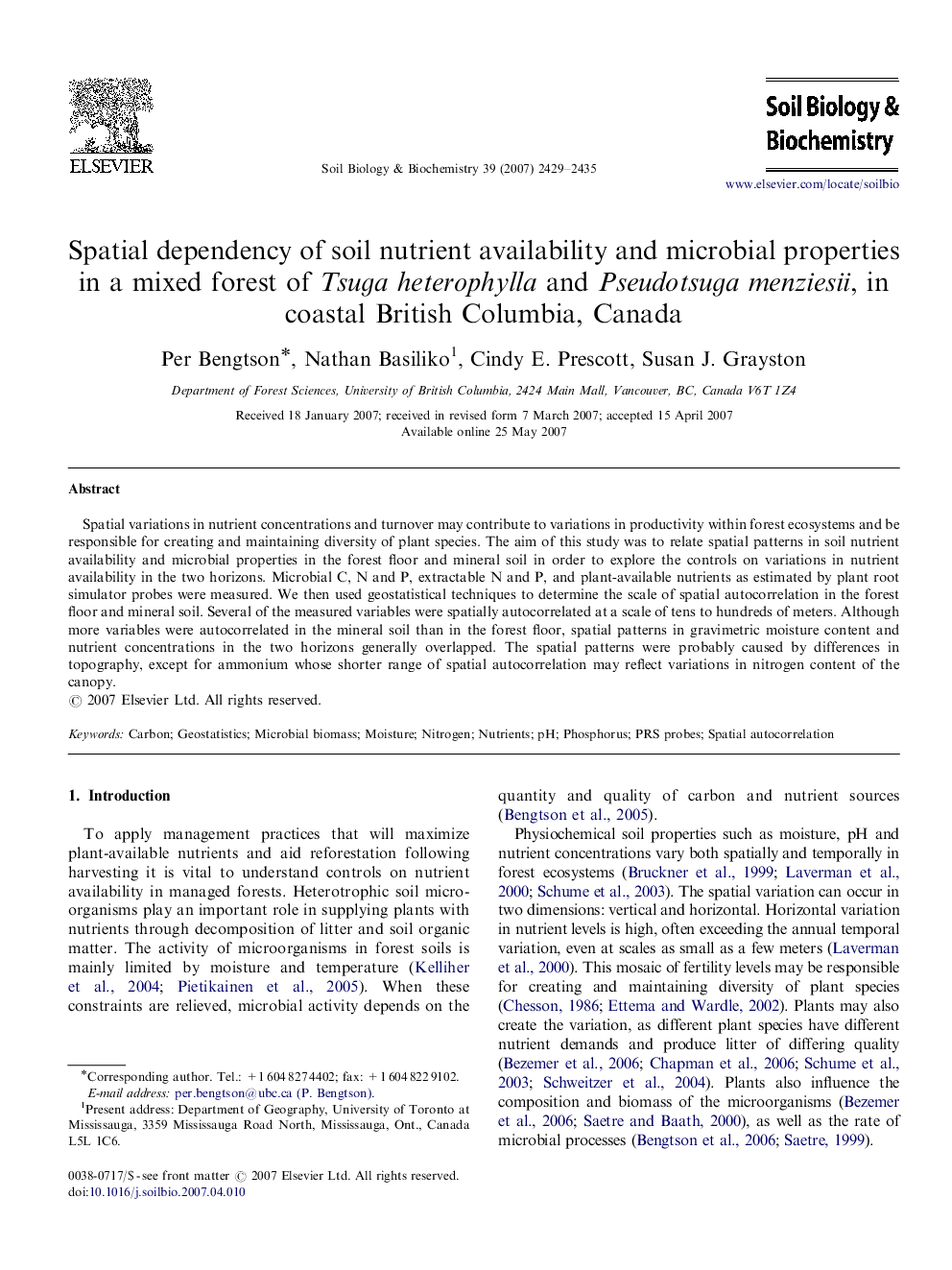| Article ID | Journal | Published Year | Pages | File Type |
|---|---|---|---|---|
| 2025907 | Soil Biology and Biochemistry | 2007 | 7 Pages |
Spatial variations in nutrient concentrations and turnover may contribute to variations in productivity within forest ecosystems and be responsible for creating and maintaining diversity of plant species. The aim of this study was to relate spatial patterns in soil nutrient availability and microbial properties in the forest floor and mineral soil in order to explore the controls on variations in nutrient availability in the two horizons. Microbial C, N and P, extractable N and P, and plant-available nutrients as estimated by plant root simulator probes were measured. We then used geostatistical techniques to determine the scale of spatial autocorrelation in the forest floor and mineral soil. Several of the measured variables were spatially autocorrelated at a scale of tens to hundreds of meters. Although more variables were autocorrelated in the mineral soil than in the forest floor, spatial patterns in gravimetric moisture content and nutrient concentrations in the two horizons generally overlapped. The spatial patterns were probably caused by differences in topography, except for ammonium whose shorter range of spatial autocorrelation may reflect variations in nitrogen content of the canopy.
